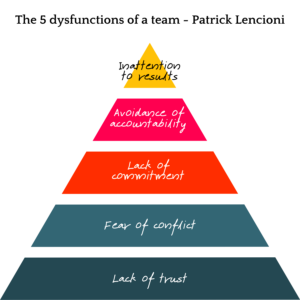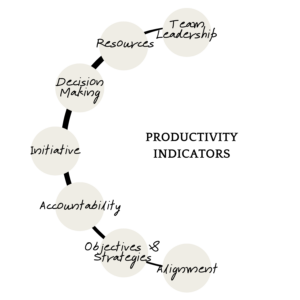Teamwork: Are you contributing effectively?
THIS ARTICLE WAS PUBLISHED ON REVUE GESTION WEBSITE.
Is it enough to gather a few well-meaning people for them to work effectively as a team? Research conducted by Team Coaching International (TCI) shows that only 12% of the thousands of teams surveyed around the world rate themselves as highly performing. Something to think about…

Certified by TCI (as a Certified Team Performance Coach), I have the privilege of accompanying organizations that want to improve team work performance. After years of experience managing significant teams myself, this specialized training has opened my eyes.
Because indeed, there is team leadership and then there is team leadership.
The responsibility for a team’s results naturally falls on the leader of that team. In the case of mixed performance, the organization questions the leader’s ability to mobilize their troops and to manage them adequately. The leader’s accountability cannot be denied. The performance of a team depends on the structures that govern interactions, such as the clarity of vision, objectives, responsibilities, and the decision-making process. These are primarily under the leader’s control.
However, the team’s performance also depends on the quality of interactions. And this quality depends on the leadership demonstrated by the team. The team members. Each of them. Regardless of the team leader’s leadership.
Let me explain.
Effective Teamwork
First, let’s agree on what distinguishes a group from a team. A group of people shares common interests that they normally seek to develop. A team, on the other hand, has a mission to achieve results.
The purpose of a team is to produce quality results. Together.
But, do you know what makes a team truly effective? And to what extent do you yourself contribute (or not…) to this performance?
Let’s first look at a simple and powerful model, that of Patrick Lencioni.
The Five Dysfunctions of a Team
Patrick Lencioni designed a story – a fable – that describes what he considers the five characteristics that hinder teamwork: The Five Dysfunctions of a Team. If you are not yet familiar with this bestseller, I highly recommend it. This classic can be read in two hours, so it’s impossible to miss!
Here is a representation of his model:

I would hate to spoil the book for you. So, I will limit myself to a brief description of Patrick Lencioni’s model.
The author conceives his performance model around five dysfunctions that threaten the effectiveness of teamwork:
1. Lack of Trust
At the base, trust among team members is essential for success. It allows for, among other things:
Accepting vulnerability; Having the courage to take risks.
2. Fear of Conflict
Finding the best solutions depends on the team’s ability to welcome divergent opinions. Healthy confrontation in a climate of trust allows for candid debates. And from the clash of ideas will necessarily emerge a better solution.
It requires a climate of trust so that members can express their opinions without fear of retaliation.
3. Lack of Commitment
For success, the allegiance of the team members must first be to the team itself. This implies rallying behind the team’s decisions, despite personal reticence. Committing means that:
Everything has been said;
Despite disagreements, a decision is made;
All team members align and speak with one voice.
4. Avoidance of Accountability
The team’s accountability, in turn, lies in the members’ ability to:
Hold each other responsible for achieving goals (ouch, it’s not always easy to confront a colleague who is not fulfilling their commitments…); However, feeling accountable is only possible if one is 100% committed.
5. Inattention to Results
Ignoring the results undermines the team’s ability to achieve its goals. Consider instead:
Delivering measurable outcomes;
Recognizing individual and collective accountability;
Giving and receiving feedback.
Patrick Lencioni’s model focuses on the behaviors of team members and the extent to which these contribute to effective interactions that yield results. It’s simple to understand and fosters awareness that goes beyond a bureaucratic approach to teamwork. It’s brilliant.
I am also a fan of the performance model proposed by TCI. Like Patrick Lencioni’s model, it delves into the behaviors of a high-performing team. However, it also includes the structural elements that are essential for its productivity. Based on management research, it has been used since 2005 to assess the performance of thousands of teams worldwide.
Here is a summary.
Teamwork: A Systemic Model
TCI views the team as a system. Its performance model considers the skills of the team as a whole, rather than the individual skills of each of its members. Indeed, the model focuses on how team members interact, as Patrick Lencioni suggests, rather than on individual skills. However, TCI considers not only social interactions but also the structures that enhance performance.
Indeed, good structures promote the productivity necessary to achieve results. Positive social interactions – positivity – in turn, allow achieving quality results and ensuring the sustainability of this performance.
Have you ever been part of a team where the structures are effective? And by that, I mean vision, objectives, responsibilities, governance, etc., but without positive interactions? The focus is on bottom-line results, perhaps without regard to the impact on human relationships. There comes a time when team members feel overworked and on guard. They then adopt a survival mode. In the long run, performance declines.
Conversely, have you ever been part of a team where interactions are positive, but the structures are lacking? Despite the collegiality among team members, the team lacks focus, the sense of urgency is low, and incompetence is tolerated. As a result, the outcomes are disappointing. It’s fun, but it’s not fulfilling.
That’s why the performance of teamwork lies in the relevance of structures promoting productivity and in the quality of positive interactions.
Here are their respective indicators:
Productivity
This is characterized by the structures put in place to allow work to be carried out effectively.

© Team Coaching International, All rights reserved.
Positivity
According to Larousse, positivity is the characteristic of what is positive, constructive. It is characterized as follows:

© Team Coaching International, All rights reserved.
Interesting, but… what now?
Fascinating, aren’t they? These models concretely express what we know deep down.
The goal, then, is to be part of a productive and positive team. But how do we get there?
Good question.
Coaching Questions
Are you contributing to your full potential to the performance of your teamwork?
Here are some questions to help you reflect on this:
To what extent do you…
Commit to never letting down a member of your team?
Raise the most important and challenging issues to the team, which must be addressed?
Rally behind decisions agreed upon by the team, even if you disagree?
Feel affected in morale if the team’s objectives are not met?
Hesitate to promote your contribution but quickly highlight that of others?
Receive valuable advice.
Subscribe to our newsletter and regularly receive strategic insights, inspiring articles, and useful resources directly in your inbox.
We are committed to sharing only high-quality content to enrich your leadership journey. Sign up now!
Receive valuable advice.
Subscribe to our newsletter and regularly receive strategic insights, inspiring articles, and useful resources directly in your inbox.
We are committed to sharing only high-quality content to enrich your leadership journey. Sign up now!
You may also like…
We are subjected to 11 million pieces of information per second.
READ MOREMaking an informed decision can be perilous. We are often faced with complex situations, lack of time, numerous distractions and strong emotions. Fortunately, advances in...
READ MOREIn a constantly evolving world, managers are always on the lookout for new talents and skills to meet the challenges they face. However, the "crucial...
READ MORE



